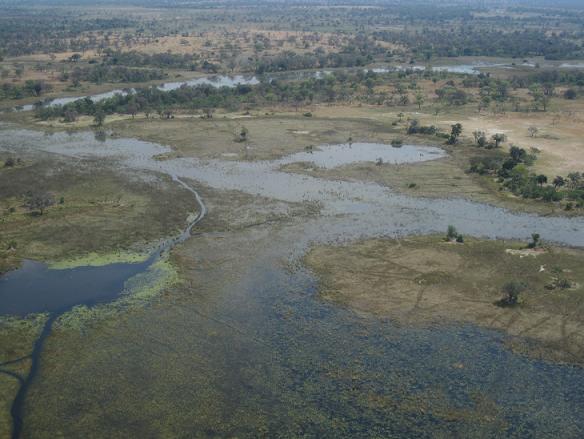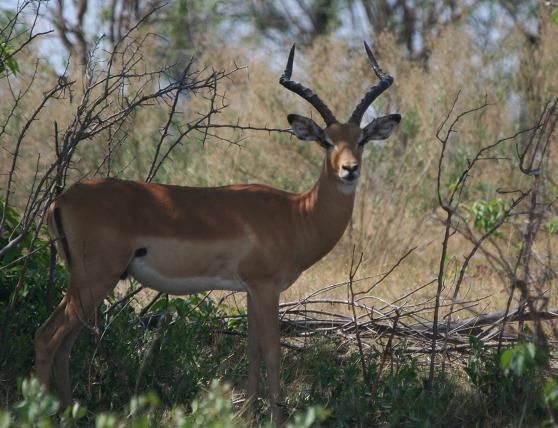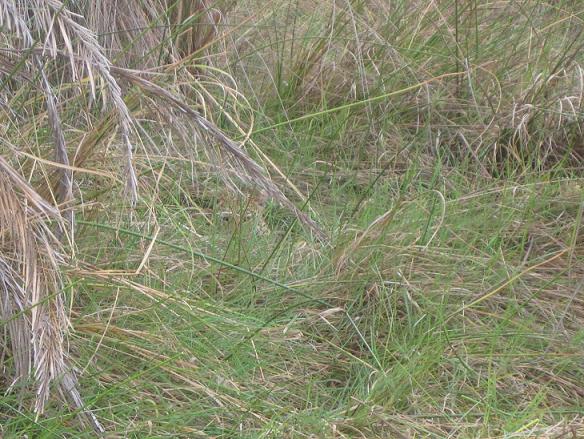The Delta
The Okavango River in Botswana flows into an inland delta where it eventually ends, not in an ocean or lake like most rivers. The marshy area it creates is home to a huge variety of wildlife and was our first destination on safari.
There are two main types of safari camps: National Parks and Reserves, and private concessions. Private concessions are areas where a private company manages the land, and also has rights to offer photographic or sometimes hunting safaris. At most National Parks, there are very strict rules about where the safari vehicles can go (they must stay on the “road” which are really just dirt tracks) and they must be out of the park by sunset, so there are no nighttime drives. However, in a private concession, there is a lot more flexibility. The guides can drive offroad to get a better view of the animals, they can drive after dark, and they can also offer other activities like walks and boat rides. There usually far fewer guests at a private concession resort, so they can do these things without having much impact on the land.
Our first camp was a private concession call the Nxabega Okavango Camp and it had just 9 tents in an area about 17,000 acres. While there was not quite the volume of wildlife we saw at the other parks, there were still interesting animals to be seen every day, especially birds. On our first night here we really didn’t know what to expect. After a 2 hours drive from the airstrip (complete with flat tire, as well as a stop for lunch) we had already seen impalas, kudus, and and fish eagle. With high hopes to see more big game in the morning in we went to bed. It gets very dark quickly since there is no external lights from any towns, so we drifted off to sleep pretty quickly to the sound of cicadas.
We were awakened a few hours later by noises that I couldn’t identify. There was a loud stamping sound of something large moving slowly through the brush. It was a accompanied by the the sound of grass and leaving being torn up and eaten. Finally there was a flapping noise that sounded like canvas being snapped. It all added up to the first of many night time visitors, an elephant right next to our tent. (We later realized that the flapping noise was his huge ears.) Later in the trip we learned that this happens often, as well as the fact that most animals only perceive the tent as a whole object, not you individually inside it. However, the first night we had no idea that the elephant was not about to go smashing through our tent and we laid wide awake in scared silence waiting for him to move away so that we could breath again.
The next morning over breakfast, everyone – guests, waitresses, and guides – all went through the ritual of discussing what they heard the night before. For some it was hippos or antelopes, but it never seemed to get any less exciting, day after day. It also meant that some days we were a little more tired than others. On another night when we were visited by a mother and baby, it was all worth the missed zzzz’s.
The other great things about this camp is that it offers other ways to see animals besides just on a game drive. There was a ride in a mokoro, or dugout canoe, as well as a sunset ride on a power boat through the swamping area that is home to thousands of birds. Finally, this was also the only place we stayed where you could go on a guided walk with a ranger (with rifle) and see some of the plants, animal tracks, and massive termite mounds up close.
The service and food was excellent, so it was with mixed feelings that we left to head to the next camp. Here are few of our favorite pictures from the Okavango Delta.
Flying in over the delta:

One of the thousands of impalas who will end up as food for a larger animal.

A male hyena – they were a lot bigger than I expected.

Can you spot the 100 pound leopard?
